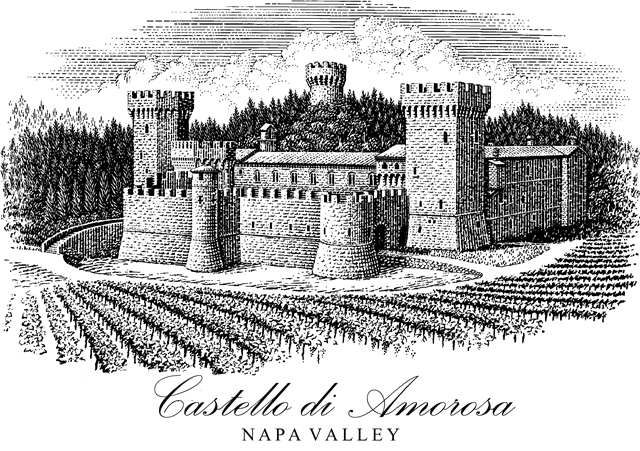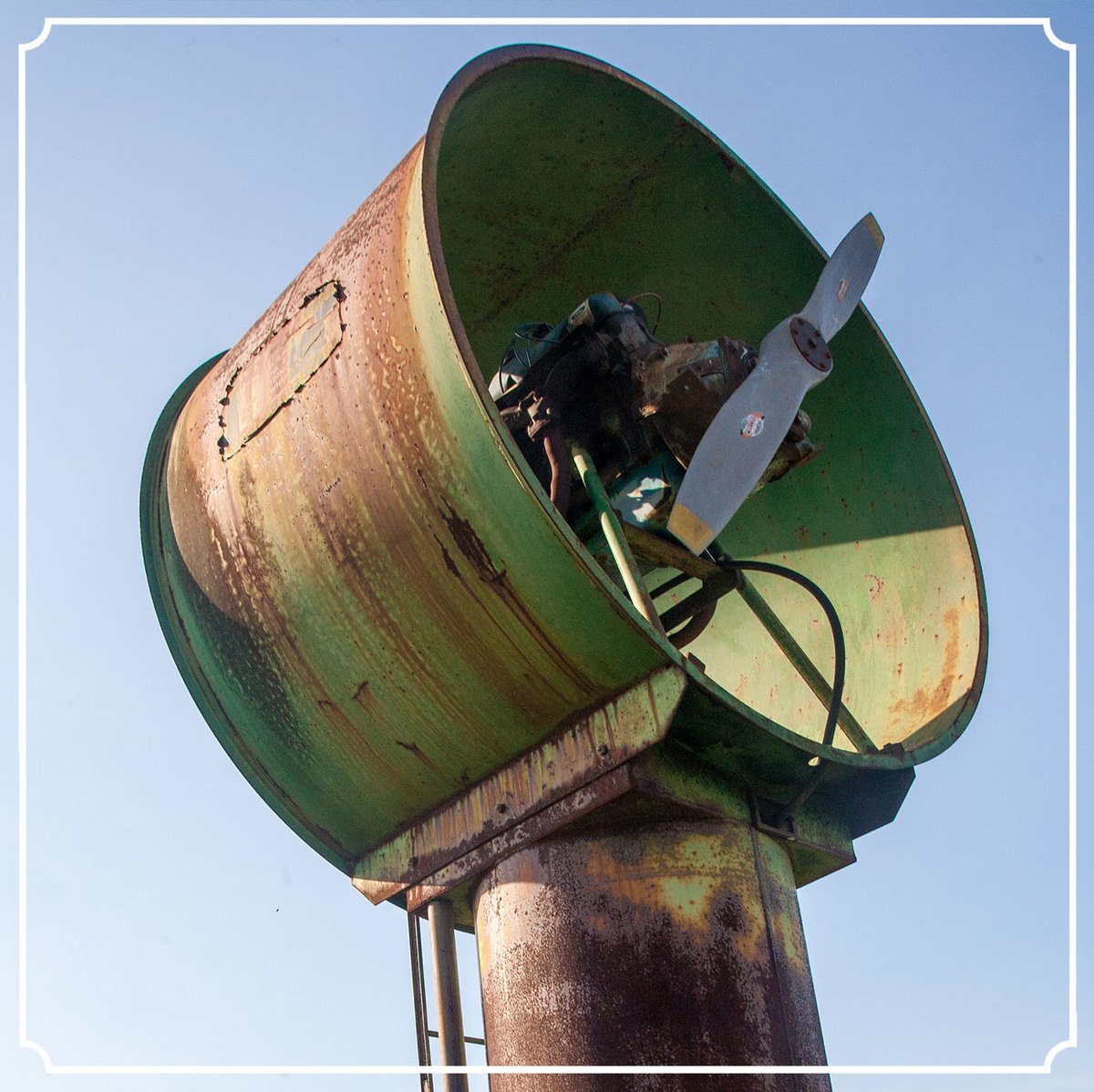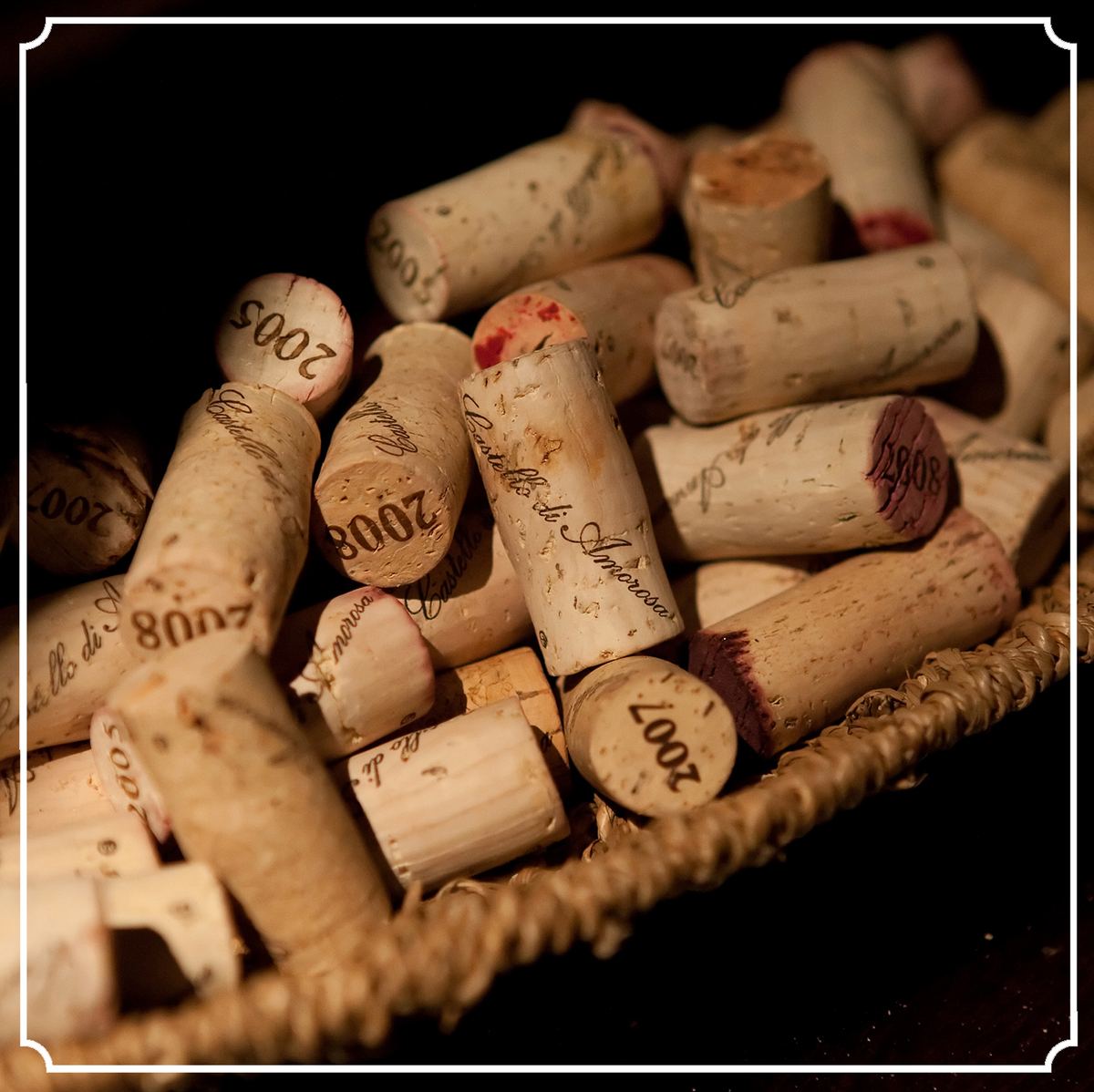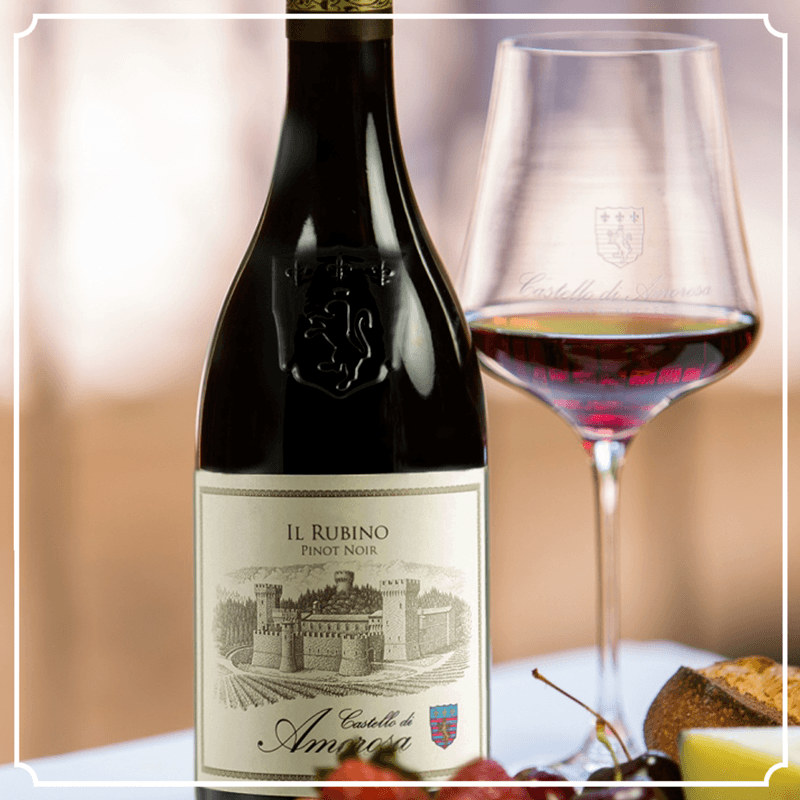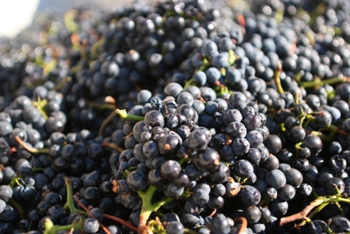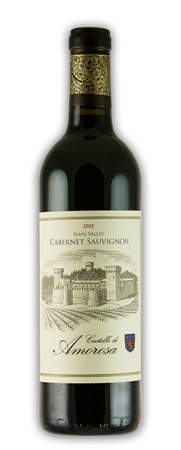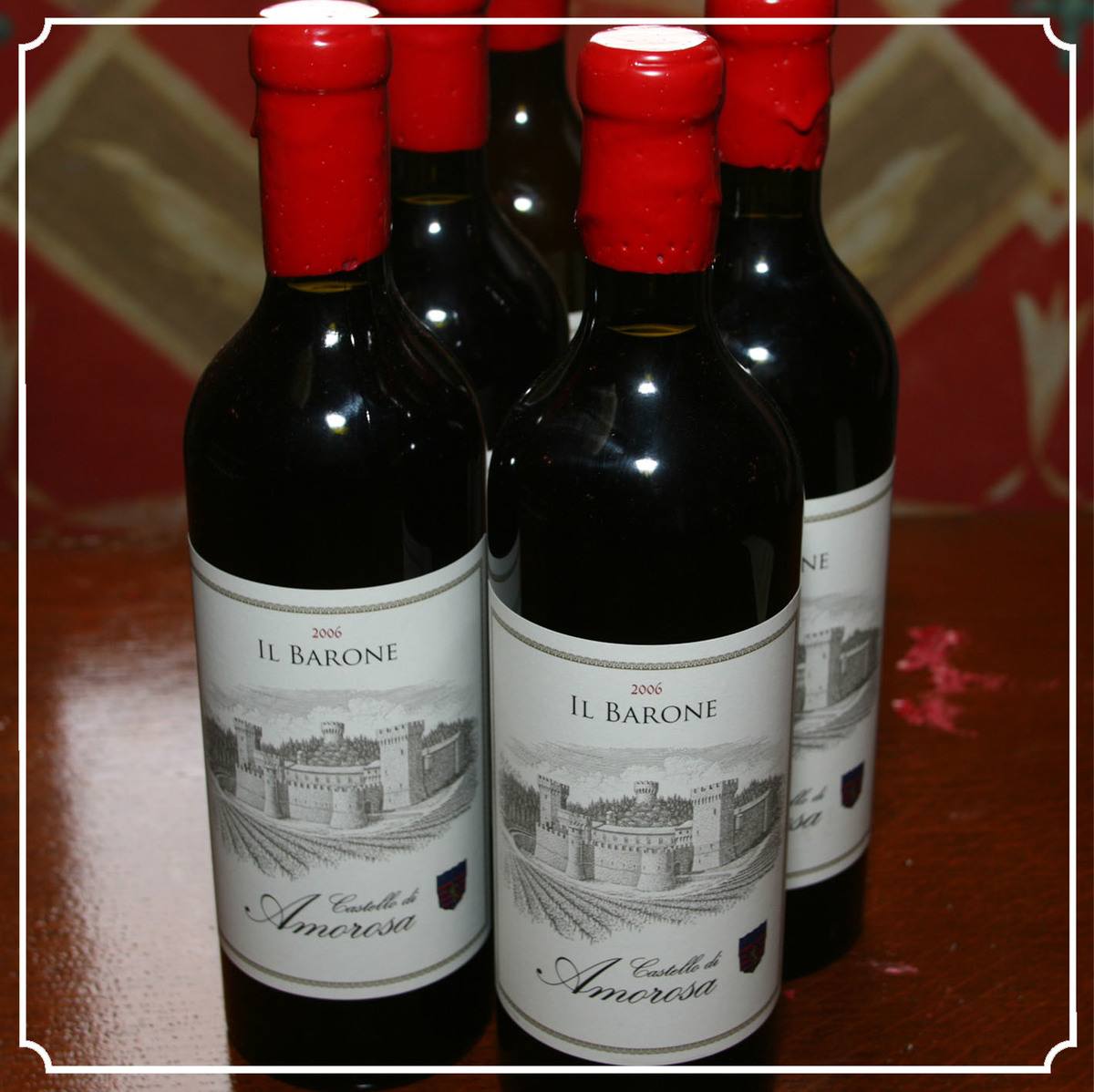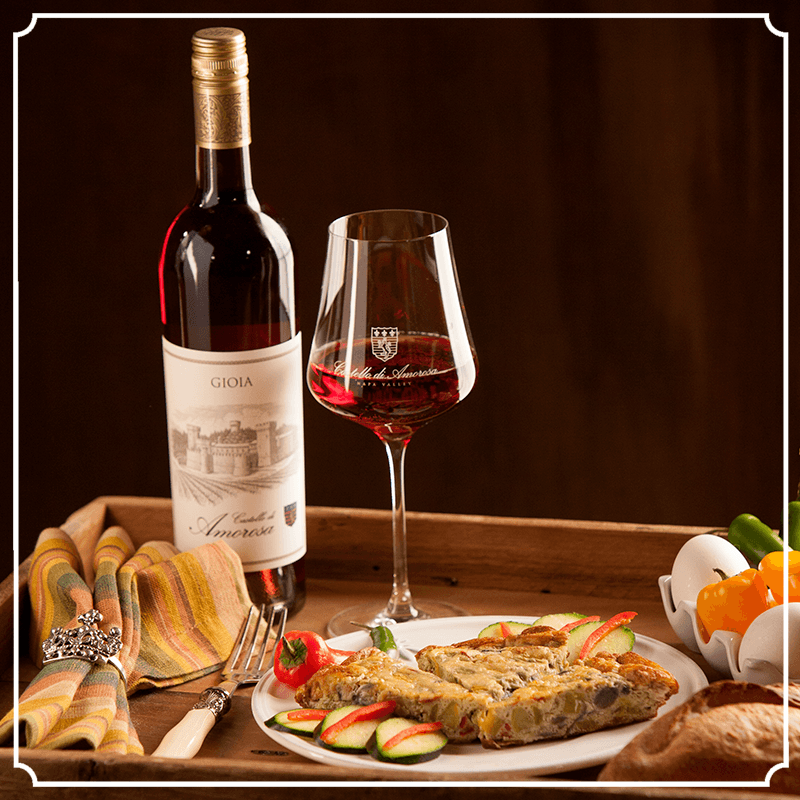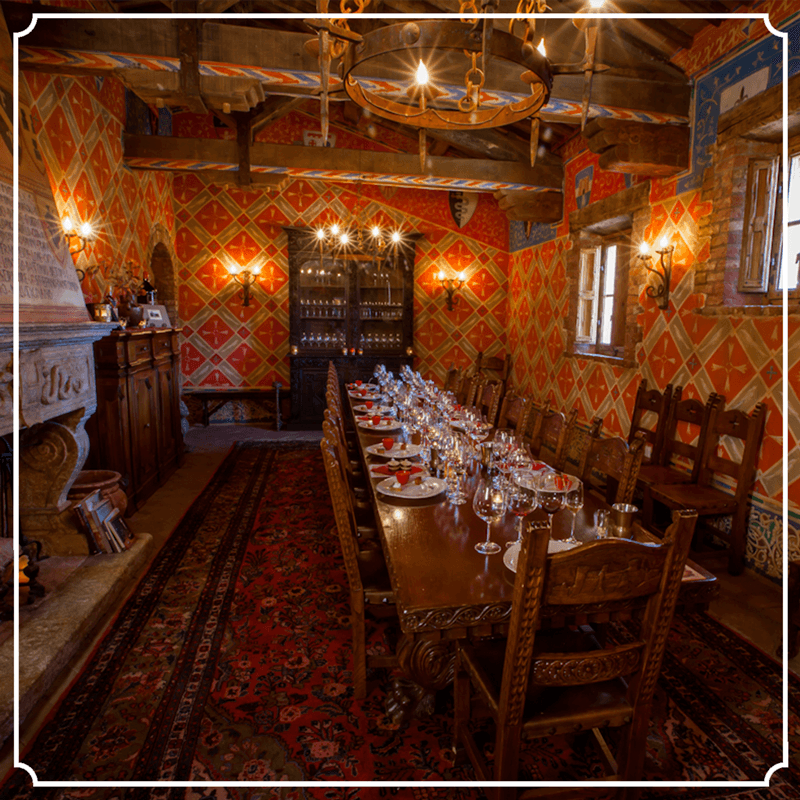Dario Donates $1 Million to the Boys & Girls Club of Calistoga

Dario Sattui
Dario Sattui donates $1 Million to Boys & Girls Club of St. Helena and Calistoga
Dario Sattui, owner of V. Sattui Winery in St. Helena and Castello di Amorosa in Calistoga, has pledged $1 million to the Boys & Girls Clubs of St. Helena and Calistoga for its future construction of a permanent Club facility in Calistoga.
Listen to Dario’s interview on KGO 810:
https://soundcloud.com/thecastello/dario-sattui-donates-one
“I am really proud to make this small contribution to the future of our community, and believe this will make a positive impact. Let’s hope the Club can raise the rest of the money quickly and open the new Club, “said Sattui.
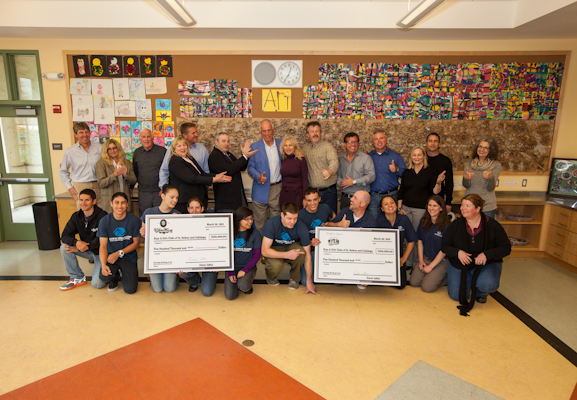
Dario Sattui with the Board of Directors and Staff of the Boys and Girls Club of St. Helena and Calistoga
“This is a landmark moment for our organization,” commented Club Executive Director Jay Templeton. “Mr. Sattui’s magnificent lead gift provides us the framework to begin focused discussions of our Calistoga project. The Boys & Girls Clubs and Mr. Sattui share the same values of respect for the environment, and the importance of agriculture, nutrition, exercise, academics, entrepreneurship, technology skills and guidance in preparing today’s youth to be productive 21st century citizens.”
Currently the Boys & Girls Clubs of St. Helena and Calistoga operates an after-school program located at the Calistoga Elementary School on Berry Street. In 2012, registered youth membership at that site was 395 with an average daily attendance of 129. The Club also operates a Teen Center located in the city’s Monhoff Center on Grant Street adjacent to the Calistoga Junior-Senior High School.
“For some time, the Board of Directors has discussed a Calistoga project,” said Templeton. “Our St. Helena facility was opened in January of 2008 following a successful capital campaign. The next vision has been to establish a permanent facility in Calistoga through community fundraising.”
On April 26th, the Board of Directors will hold a Board retreat specifically to discuss the Club’s Calistoga future, including discussions on a potential location, cost, size, fundraising and timing. “We hope to come out of that day with basic direction and to set the course for a new Boys & Girls Club building in Calistoga,” remarked Templeton.
Sattui will attend the Club’s Board of Directors meeting at noon on March 20th to present two $500,000 checks. Each of his local businesses, V. Sattui Winery and Castello di Amorosa are contributing jointly.
The Sattui donation is the second lead gift received for the future Calistoga project. In November of 2012, the DeLong-Sweet Family Foundation made the first contribution, a $250,000 pledge arranged by Calistoga residents Paul and Pamela Ingalls. The Boys & Girls Club hopes these early donations are an indication of the support it will have and need in order to complete the Calistoga capital campaign and the construction project.
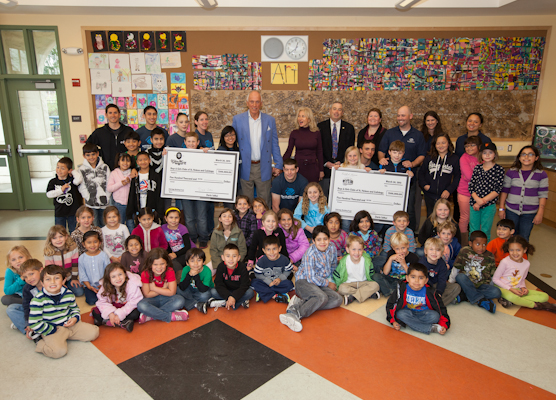
The children of the Boys and Girls Club of St. Helena and Calistoga with Dario Sattui and staff.
Noted Board of Directors President, Kathleen Herdell, “We are thrilled by the generosity of Dario, Paul and Pamela. Their contributions will touch the lives of Up-Valley children for generations to come. ‘Thank you’ just doesn’t adequately capture the gratitude we feel for these visionaries and role models. They are helping to give the kids a safe and positive place to be after school and all summer long. Having watched the excited faces of kids as they enter the St. Helena Clubhouse, I can’t wait to give the Calistoga children that same experience.”
A Chill In The Air

Mary Davidek
A chill in the air
Discover how to keep vineyards warm in the winter with expert insights from Castello di Amorosa. Discover solutions used to protect vineyards from the cold. Although long periods of extreme cold and sub-freezing temperatures can always cause distress in a vineyard; frost is particularly damaging in the early spring. Once bud break occurs, spring frosts can kill the young shoots potentially destroying a crop. If you visit wine country in early spring you may spot a few different methods utilized by vintners in attempts to combat frost damage. Most preventative measures are expensive and vary in effectiveness, but, the financial loss of frost damage is extreme.
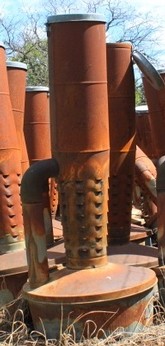
The least utilized and possibly least effective way to keep vineyards warm in the winter is burning oil in a smudge pot. The smoke and heat generated is hopefully carried over the vineyard by the wind forming a warmer protective blanket. As the heavier cold air sinks, the warm blanket of air protects the shoots.
A solution that seems just as drastic but that has actually proven viable in some vineyard locales; spraying the vines with a fine mist of water. As the water freezes it forms a protective layer of ice insulating the young shoots by trapping the heat, (think of an igloo or an ice cave). Since Napa Valley’s Mediterranean climate doesn’t generally dip below 25 degrees Fahrenheit, this method shows promise as it is environmentally less invasive and more economically viable. A negative for using water is fairly obvious but worth noting: you are using water, which can be scarce or completely unavailable in remote vineyards.
The most common and visually the most obvious method in use can be viewed off 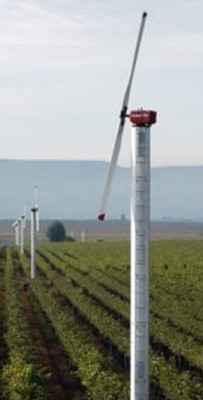 Highway 29 and along the Silverado Trail. What looks like windmills are actually wind machines, which move air over vineyards to keep the coldest air from settling on vulnerable, young shoots. The heavier cold air mixes with the warmer air, being moved by the wind machine, creating a slight elevation in temperature which is often just enough to ward off frost as long as that temperature is above 28 degrees Fahrenheit. However, I live close to one such wind machine and I see it as only partially effective. While it prevents frost from developing in areas directly in the path of said turbulence, my personal observation is the outlying areas are often blanketed with frost. Another fact to consider…..wind machines are essentially propellers that run on fuel so they can be expensive to run and the noise level can be extreme – especially in the wee hours of the morning when they are typically used. *yawn*
Highway 29 and along the Silverado Trail. What looks like windmills are actually wind machines, which move air over vineyards to keep the coldest air from settling on vulnerable, young shoots. The heavier cold air mixes with the warmer air, being moved by the wind machine, creating a slight elevation in temperature which is often just enough to ward off frost as long as that temperature is above 28 degrees Fahrenheit. However, I live close to one such wind machine and I see it as only partially effective. While it prevents frost from developing in areas directly in the path of said turbulence, my personal observation is the outlying areas are often blanketed with frost. Another fact to consider…..wind machines are essentially propellers that run on fuel so they can be expensive to run and the noise level can be extreme – especially in the wee hours of the morning when they are typically used. *yawn*
Does a foolproof solution exist? Well, if you have an opportunity when driving in the valley, look to the hills. It is rare to find any method of frost control on sloped vineyard sites. Dense cold air naturally drains off the hillsides and settles onto the valley floor quite often rendering the hillsides unaffected by frost.
In this north end of the Napa Valley we are fortunate. With the Mayacamas Mountains to the West and the Vaca Mountains to the East, some of the most prestigious viticultural land in the world has been created. Castello di Amorosa’s Il Barone and La Castellana wines are crafted from Cabernet Sauvignon vineyards on Diamond Mountain, part of the famed Mayacamas range; above the fog line, drenched in sunshine and relatively unharmed by frost.
As we continue to progress in viticulture methodology one fact holds true – Mother Nature will always have the final word.
And with that my final word – Cheers!
Mary Davidek C.S., C.S.W.
Corkage Fees and BYOB – Part 2

Mary Davidek
Corkage Fees and BYOB – Part 2
In the last submission I covered the basics of getting your wine to the restaurant. Now, for the dedicated corkage seekers……..let’s continue.
Take care of the waitstaff. Many experienced servers see a bottle carried in and mark you as a diner who is…….well……thrifty. I prefer to call it savvy. And when addressing the monetary side of it, I usually MYOB but regarding BYOB; I can’t hold back. If service warrants a generous gratuity, include an additional percentage for the server to off-set their loss of a potential wine sale. I usually include an extra 5%. In a more intimate dining setting I offer the server, or chef, or other interested staff a small sample of the wine. If you frequent a particular restaurant, develop a rapport with your favorite server. A big bonus, many times the published corkage fee disappears.
When possible I patronize restaurants with lenient BYOB practices or those that do not charge corkage…..EVER! Be on the lookout for specials or promotions. One of our favorite Napa spots offers “No Corkage Mondays”. Some wineries have partnered with local restaurants who offer complimentary corkage if you bring in a bottle purchased at the referring winery. Castello di Amorosa has a list of at least 20 restaurants in the valley that are happy to open a bottle of Castle wine at no charge. And kudos to Restaurant Cuvée in Napa and Farmstead in St. Helena, CA; a small corkage fee is charged and donated to charity. Bravo!
Become active on sites like Yelp and Trip Advisor to give feedback and accolades. Wine forums are also a great place to turn. Check out WineSpectator.com, VinoCellar.com and RobertParker.com; you will find lively and well-informed participants as well as updated BYOB info.
As previously mentioned, there has never been a better time to dine out with wine as more restaurants and chefs are embracing BYOB diners. States that had prohibited BYOB in the past are now loosening laws and restrictions. Establishments that at one time discouraged corkage enthusiasts are now recognizing the valuable business this clientele provides.
Happy dining –
Cheers!
Mary Davidek C.S., C.S.W
A sweet finale on the Castello di Amorosa Royal Pairing, the Fantatini. Recipe?… Simple. Scoop and pour!
Red, White and Bleu …… Let Freedom Ring!

Mary Davidek
Meet Mary
Red, White and Bleu …… Let Freedom Ring!
Freedom; no single word in the English language is more synonymous with America. Case in point, “Life, Liberty, and the pursuit of Happiness” is a well-known phrase in the United States Declaration of Independence as is inalienable rights which the Declaration says all human beings have been given. Even when certain ‘dry” movements (prohibition 1920-1933) threatened one inalienable right, the powers that be eventually restored this right and true freedom was reinstated.
Without starting a political debate, let’s just talk about the fun stuff! We have the right to eat what we like and drink what we choose. In the United States we boast more than 3,700 certified wineries and in Napa, there are more than 450 wineries in this relatively tiny valley. It is obvious happiness has been justly pursued. For the purpose of this blog and this holiday let’s concentrate on a quintessentially American if not, Californian grape; Zinfandel.
Also known as Primitivo, Zinfandel is planted in nearly 15% of all California’s vineyards. Many debates have ensued as to who can rightly lay claim to this popular cultivar’s origination but DNA fingerprinting revealed it is genetically equivalent to Croatian grapes (which I will spare you the pronunciation of) as well as the Primitivo variety traditionally grown in the Puglia region of Italy. Eventually, this grape found its way to the United States in the mid-19th century, and became known by the name “Zinfandel”. Zinfandel thrives in Napa’s Mediterranean climate as well as other growing regions of California. Geographical and climatic differences are expressive and many; robust and tannic, fruity and candied, complex and aromatic.
As stated, this is about fun, freedom and the right to pursue both. This 4th of July, you will find me celebrating the red, white and blue with another red, white and bleu. Castello di Amorosa Zingaro (Old Vine Zinfandel) and a yummy burger off the grill. I like 2 cheeses to top my burger, a little white cheddar for creaminess on the palate and a few bleu cheese crumbles for a salty zing. With all the usual burger suspects present and accounted for– this red white and bleu is perfect to get you in the mood for a night of fireworks.
Happy 4th of July—Let Freedom Ring!
Mary Davidek, C.S., C.S.W.
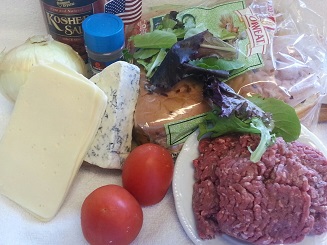
Everything for our decadent 4th of July burgers.
Remember, on the grill or the stove–160°F is the safety zone for hamburger.
Castello di Amorosa’s Zinfandel from Russian River Valley is spicy and fruity with hints of potpourri and dried Bing Cherries. Just big and bright enough for the Bleu and Cheddar.
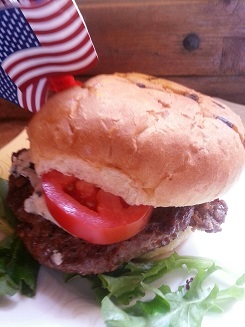
Happiness pursued and achieved–enjoy with your firework spectacular!
Corkage Fees and BYOB – Part 1

Mary Davidek
Corkage Fees and BYOB – Part 1
BYOB = Bring Your Own Bottle
Corkage Fee = the fee charged to open and serve a bottle of wine not purchased at the dining establishment
Every restaurant has restrictions and specifications which are said to cover the cost of opening a bottle, providing stemware, and serving the wine. Realistically, a corkage fee is charged to cover lost revenue. I am unabashedly a self-professed BYOB junkie; a dedicated corkage hound ……and I go to extremes in my pursuit. Here are a few situations I have encountered and simple resolutions which may help in your quest.
1. Call the restaurant or check their website prior to your reservation as fees and restrictions vary. Some restaurants may impose a 1-bottle limit and others may have more tempting ways to capture your attention. A growing trend; restaurants charge a fee but will comp it one for one, for every bottle purchased. For example, restaurant “X” charged $25 corkage. I brought in a bottle of Castello di Amorosa Cabernet Sauvignon. From the restaurant wine list I selected a bottle of Sauvignon Blanc to enjoy with apps. I love a zippy Sauvignon Blanc with bruschetta and goat cheese on a warm baguette; sublime. The bottle I purchased was $28. That’s right, the corkage fee for my Castello di Amorosa bottle was waived. This is clearly a win-win. Typically I bring in a red and purchase a white from the list as even the grandest wine menu offers a tasty and affordable white wine.
2. A common and reasonable request; the bottle you bring in cannot be available for purchase on the existing wine list. To ensure your selection for carry-in is acceptable, browse the wine list on-line or request a fax or emailed copy prior to your planned visit. Here is my fool-proof solution. Bring in wine from a winery that does not distribute. This is becoming easier as more small and mid-sized wineries are opting for direct-to –consumer sales only. Castello di Amorosa wines have been a fixture on my restaurant outings for this very reason. Restaurant wine lists change weekly and this takes the guess work out of it.
3. Prepare your bottles. If you want a chilled bottle of bubbly with your Dungeness crab; chill it. If you are bringing a Napa Cab with a little age on it, stand it up for a few hours prior to leaving which allows sediment to collect at the bottom.
4. I have seen bottles transported in everything from a paper shopping tote to a plastic grocery bag. My advice; invest in a respectable wine carrier. From leather totes to canvas carrying bags to decorative wine boxes – your wine should travel in style.
Good news for us food and wine lovers, corkage and BYOB is becoming an accepted standard. Restaurant owners are adopting more favorable corkage policies as a marketing tool.
Stay tuned……Part 2 coming up.
Cheers!
Mary Davidek C. S. , C.S.W.
Perfect Pairings Dynamic Duo

Mary Davidek
Perfect Pairings Dynamic Duo
The first time I saw the man who would eventually become my husband I was dumb-struck (quite a confession those who know me will attest). Just my type; tall, dark (it was summer), and handsome. After a chat over a glass of vino (what else?), I made the fatal mistake of telling him I thought he was smarter than I was. I say fatal mistake as it is now 24 years later and he won’t let me forget that statement.
24 years later and he won’t let me forget that statement.
Our friends often tell us they have never met 2 people more suited for each other, meant to be together. Better together as 1 than separate as 2. Like peanut butter and jelly, milk and cookies, peas and carrots……it just works.
Perfect pairings certainly enhance and intensify and one thing which is singularly good, but with food and wine, perfect pairings take on a new meaning. If you have ever been on the Royal Pairing Tour at Castello di Amorosa you may have experienced a few of these perfect pairings. A rich pate’ with Castello’s award winning Il Passito comes to mind. Sommeliers agree this match is perfection. Popular wine writer Karen Macneil says “this luxurious pairing comes perilously close to maxing out the human tolerance for pleasure”. An endorsement like that certainly piques the imagination. But, must perfect pairings always be so lofty, and quite candidly, so costly to be perfect? Does perfection have a price? A rule of thumb, pair rich with rich and humble with humble. One of my affordable favorites, a simple roast chicken (any grocery store’s rotisserie is fine), and a bottle of Pinot Noir. The rustic flavors of a simple roast chicken, a loaf of crusty bread and the earthy tones of Pinot Noir are magical together. When selecting your pinot go for light and fruity bottlings from Sonoma. For my dollar Castello’s Los Carneros Pinot Noir is the perfect choice with a hit of clove balanced with bright fruit. This Valentine’s Day, a day dedicated to perfect pairings, celebrate this dynamic duo with your honey. Light a couple of candles, put in your favorite music, pour a couple glasses of vino and relax.
Throughout the year, connect with your inner match-maker; go forth and discover new and exciting pairings.
And remember, perfection is in the eyes of the beholder……
Cheers and Happy Valentine’s Day
Mary Davidek C.S., C.S.W
Is Bigger Always Better?

Mary Davidek
Is Bigger Always Better?
Big juicy burgers. Big healthy baby. Big hotel suite. Big expense account. Mr. Big. But big wine? In our super-sized reality is big always better?
Since big is often a matter of perspective and can be vague in usage, to better understand big as it relates to wine we need to go to the source; to the vineyard. In wine, the meaning of big is typically synonymous with Cabernet Sauvignon grown in the Napa Valley. Since Napa is home to some of the most expensive agricultural land in the United States it is understandable how big enters the picture. Cabernet grown in this lush valley thrives. Upon examination this petite powerhouse of a grape resembles a small dark blueberry more than a familiar table grape. As a matter of fact, all grapes are called berries. Cabernet berries are tightly clustered and the skin is thick and darkly pigmented. But this power is not just skin deep. With the largest seed mass of any black grape, the tannin to juice ratio is only one factor when defining big – as there is nothing passive about this aggressive little berry. However, it is all part of the big reveal. We must look to the winemaking team and the philosophy espoused by each winery and the fruits of their labor for ourselves.
Since I do not drink wine that assaults my palate, when drinking Cabernet I seek out plush, velvety and elegantly styled wines. Some critics may argue this type of cabernet disappeared with payphones and library cards. I disagree. Classically styled Cabernet, while not prolific, is available.
Under the direction of Dario Sattui, one of Napa Valley’s biggest success stories, the winemaking team at Castello di Amorosa strives to produce wines with sophistication. Executive winemaker Brooks Painter utilizes “tannin control” techniques from vineyard to production. The result is palpable.
In the vineyard, Castello’s Cabernet is picked at 25 degrees brix (sugar level). But aside from sugars, Brooks and his team monitor the maturity of the tannins by tasting the fruit from each vineyard block as harvest approaches. Once the juice is in the tank the cap of solids (skins and seeds) is reintroduced to the juice via punchdown or gentle pump-over to limit the over-stimulation of phenolics (natural organic compounds in the juice).
But regardless of the winemaking philosophy or the vineyard geography, the real test is largely subjective and that individual perception or preference is ultimately the biggest player in the equation. The big reveal is how you perceive the wine you are drinking. Thus the debate on big wine continues.
When does size matter? There is one point on which we can all agree…….
A big glass of wine is always better.
Cheers!
Mary Davidek, C.S., C.S.W.

How do You Measure a Year?

Mary Davidek
How do you measure a year?
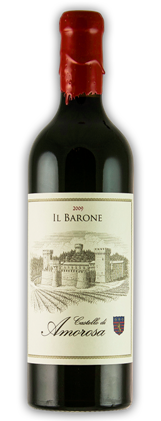
As 2012 came to a close and we rang in another year of new beginnings, fresh starts and clean slates, I reflected on the past 365 days. How did 2012 Measure up? Did I live each day to the fullest or did I just do time?
Each January first we receive a one-year sentence and thus begin the process of turning the proverbial page on birthdays, dentist appointments, holidays, and oil changes—they all come and go with the steady turn of months. Is this the measure of a year? Flipping pages…simply doing time.
What about grapes? How will the 2012 vintage measure in Napa Valley? Here at Castello di Amorosa, amidst the sprawling vineyards of Napa Valley, the concept of measuring time takes on a richer, more flavorful meaning. With near-idyllic weather conditions dominating the growing season, vintage 2012 shows great promise. We will know the extent of this hopeful success in the years ahead when we taste the matured wine. Until then we will keep watch on this cellared expectation as we sample from the barrels…and wait. I recall tasting the 2009 Il Barone just a few years ago. Drawn from the barrel the young Cabernet was tannic, aggressive, almost abrasive in its blatant immaturity. Last month I pulled the cork on a bottle and the seductive notes of black cherry and licorice jumped from the bottle. The once angry tannins are settling into a presentation of refined strength. Time has served it well. This metamorphosis, guided by the hands of time and the expertise of winemakers, encapsulates the true measure of a year in Napa Valley.
From today forward, this is how I will measure my years… my vintages. How do I know if 2012 was a success? There are beautiful memories and experiences that I will savor for years to come as well as “learning moments” that I cannot say, that at this time, I can look upon so fondly. Perhaps in a few years, I will look back fully able to appreciate and comprehend all I experienced in 2012.
Before this full potential can be realized, however, it needs to do some time.
Happy New Year
Mary Davidek, C.S., C.S.W

Left Over---But Not Forgotten

Mary Davidek
Letf Over – But Not Forgotten
Having a birthday on or near a holiday has its good and bad points. Obviously, friends and family gather to frolic and take part in festive merriment. Unfortunately, said merriment typically has little to do with the birthday and everything to do with the holiday. Me, I share my birthday with a Turkey. November 25th is always crammed with either celebration preparation or post-feast recovery. Every 7th year my birthday is THE day and the turkey proves a formidable rival; pumpkin pie with birthday candles does not have the allure of butter cream frosting with bright neon pink birthday wishes.
My mother was sensitive to this scheduling conflict, thus, when I was very young I was appeased with a trek to the toy store and carte blanche up to $25. In my teens, it was off to the movie theater with my friends for whatever movie was making its blockbuster holiday premier and a pizza sleep-over. As I grew up and eventually, out, we took on a new tradition. I was crowned the decision maker as to what to do with the turkey left-overs. Finally, the bird’s day in the spotlight was over, literally left-over.
A few of my favorites were fairly ordinary; Shepherd’s Pie, Turkey pot pie and Turkey noodle soup were regulars. As I got older, the requests were a bit more sophisticated. Turkey and sour cream enchiladas met with approval and when I requested Turkey Taquitos–that was a keeper.
However, one of my favorites was nothing inventive, creative or inspired by culinary vision. Regardless of my left-over request, turkey salad on mini cocktail bread made an annual appearance and truth be told, I would have forgotten about the other gastronomic explorations in favor of the plate of petite pleasers. As I came of age to share a bit of vino, a glass of bubbly or a fruity rose was included in the party.
I no longer compete with the bird, instead, we are allies. I happily share my birthday with the invited guest and relish the tasty treats it provides.
I thank the bird as left-over memories fill me with happiness.
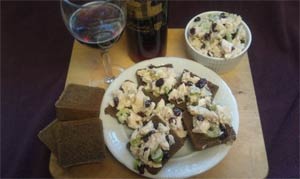
Not only a great way to use the turkey, but with this salad you can toss in fennel, celery, apples, onion, or cranberries. The La Fantasia has bright berry notes and a slight effervescence; what a way to welcome the holiday season.
Mary Davidek C. S., S.W.

Brussels Sprouts, Wine and a Founding (foodie) Father

Mary Davidek
Brussels Sprouts, Wine and a Founding (foodie) Father
My inaugural blog is inspired by the season (harvest, Thanksgiving) as well as a pivotal election year. Lately, I have found myself churning with thoughts of presidents, Thanksgiving feasts and, of course, wine. For some inexplicable reason this combined into one seemingly implausible package when suddenly an image of Thomas Jefferson became etched in my mind. After a little cyber-searching clarity was resumed; apparently, for me, nothing says ‘Thanksgiving’ like Thomas Jefferson, Brussels sprouts, and wine!
Although the exact origins of Brussels sprouts are not known, Thomas Jefferson is credited with introducing these curious plants to the United States and they were planted at Monticello, his Virginia home. Jefferson loved wine and became one of the world’s most quoted wine connoisseurs. He said ‘wine is a necessity of life’. Well, along with great wine our nation’s 3rd president also had quite an appetite for interesting food and was known for his sophisticated palate. Jefferson frequently hosted lively dinner parties and would often tantalize and intrigue his guests with new delicacies and served delicious wine and unusual foods to promote stimulating conversation. I can only imagine the questioning glance of an inquisitive guest as a platter of odd mini- cabbages were set upon the table and unexpectedly found them to be deliciously savory little vegetables.
With mouthwatering dishes, wine flowing, animated discussions and laughter filling the air……….I then pictured a pleased Thomas Jefferson, content and giving thanks.
Shucked Brussels Sprout leaves Sautéed with shallots and pine nuts
(Aka How to Convert Brussels Sprout Haters into Brussels Sprout Lovers!)
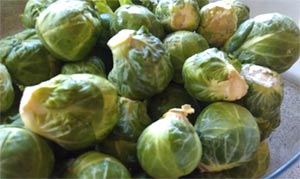
Brussels sprouts are a cruciferous vegetable as are cabbage, broccoli, and kale. They contain healthy amounts of vitamin A, vitamin C, folic acid and dietary fiber and are believed to protect against certain cancers.
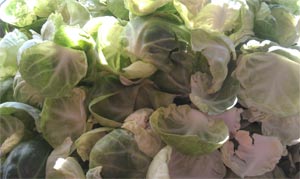
It takes a bit time but it is oddly therapeutic. Once shucked from the core, the green leaves of the sprout don’t have a bitter tang. 1 pound of Brussels sprouts shucked leaves serves 4.
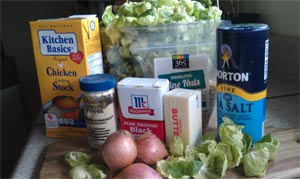
Sea salt, pepper (white or black), butter, pine nuts, shucked leaves, shallots, chicken stock
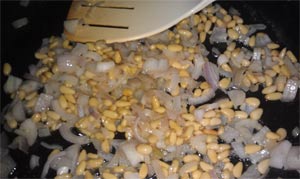
Lightly sauté pine nuts and shallots in 1TBSP butter and sprinkle w/ salt. Remove from heat.
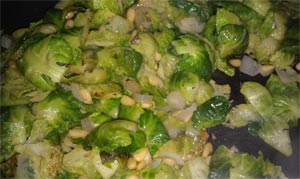
Sautee sprout leaves in 1 TBSP butter and season w/ salt and pepper. Add 2 to 5 ounces chicken stock as a light braising liquid. Boiling sprouts results in significant loss of nutrients but sautéing or roasting does not. Add pine nut and shallot mixture once the sprouts begin to cook down.
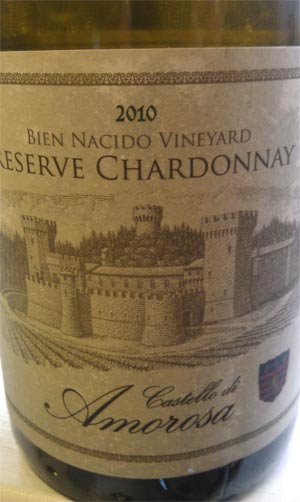
Although veggies are not typically wine-friendly, the butter and pine nuts make this a match for Chardonnay. Castello di Amorosa’s Reserve Chardonnay offers just the right touch of juicy pear and stone fruits balanced with a texture of creamy nutty tones that compliments the richness of this dish.
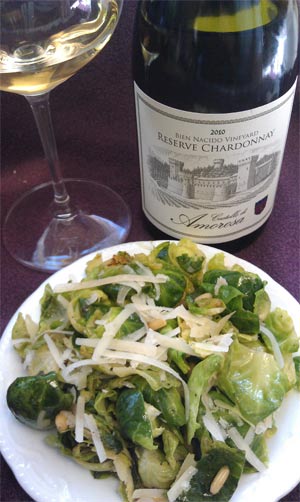
For extra goodness, sprinkle with grated parm.
Buon Appetito.

